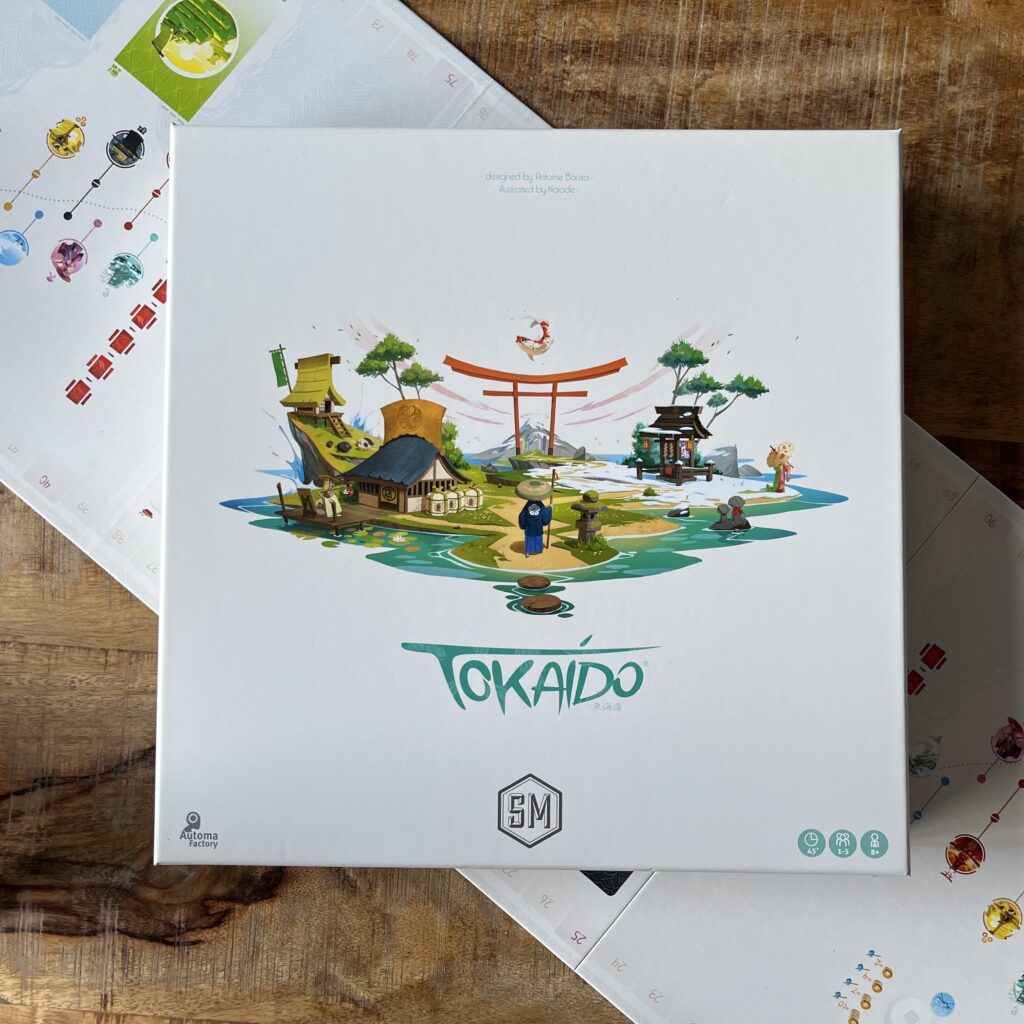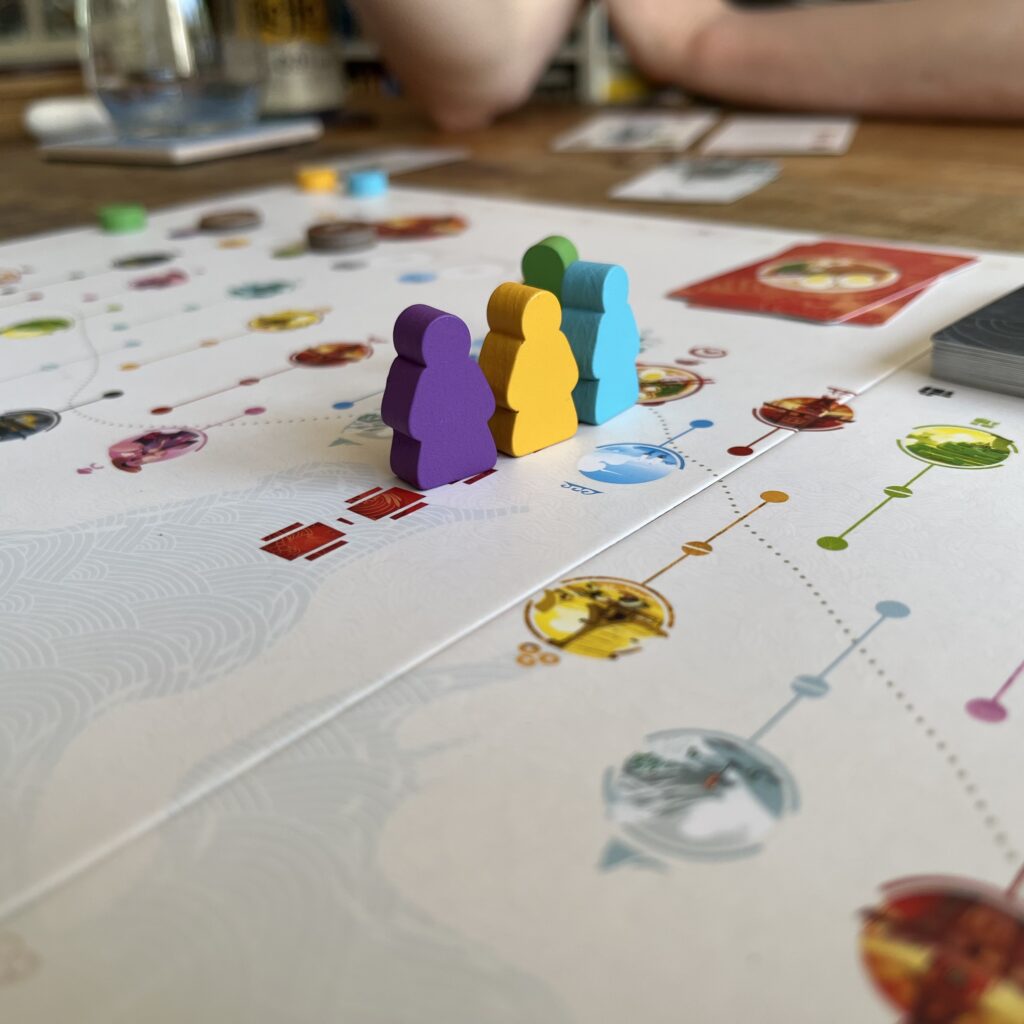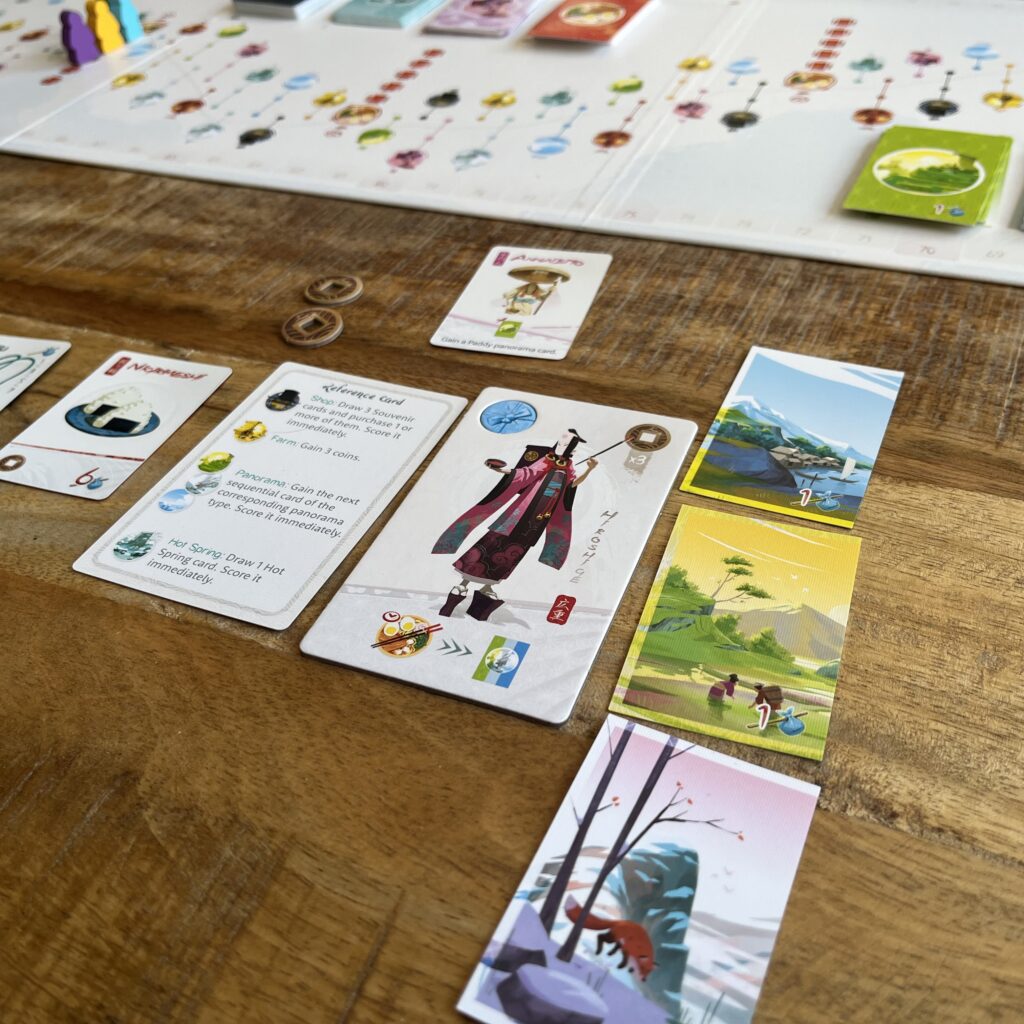Traveling through Japan evokes images of picturesque landscapes, serene temples, and culinary discoveries. At least, that’s what I imagine based on the many YouTube videos I’ve watched, as I haven’t yet had the fortune to travel through Japan myself. If I am to believe it, it is a travel experience that offers inner peace, beautiful landscapes, and bustling cities, with plenty of bowls of ramen being eaten. Or rice balls. Or mochi. Or other delicacies. Yum. The board game Tokaido tries to capture this travel experience in a playful setting, where players imagine themselves as travelers walking the historic Tokaido road, from Kyoto to Edo. But does the game live up to this promise? Let’s hit the road. Yooooooooh.

A brief background
Tokaido was originally published by Funforge, a French publisher known for games with an artistic and thematic focus. However, in recent years, Stonemaier Games has taken over the reins. For those unfamiliar with Stonemaier: this publisher has made a name for itself with modern classics like Scythe and Wingspan. They are known for their high-quality production and attention to detail in both gameplay and design. It is therefore no surprise that the Stonemaier version has received an upgrade in terms of components and, of course, a rich solo mode.

Setup
In Tokaido, players take on the role of travelers moving along various locations on the Tokaido route. The board, designed as a panoramic view of the route, offers different types of stops: from panoramic points and temples to inns and souvenir shops. Every so often, players must actually stop at an inn to rest and enjoy a meal. Each player chooses a character with unique abilities, which provides diversity in strategies and varied replayability. The goal is not simply to be the first to reach the destination, but to make the most memorable journey by scoring points based on the experiences you collect along the way.
Gameplay
Tokaido revolves around an interesting dynamic: the player who is furthest behind takes their turn. This creates a tactical element where choices not only determine what you collect but also how many turns you can take. For example, you must decide whether to work on a panorama or save money for a luxurious dinner at the inn. Each stop on the route offers unique advantages and actions, but planning your route requires foresight and assessing your fellow players’ intentions.


The simplicity of the rules makes it accessible to new players, while the subtle strategies can intrigue more experienced players. The balance between creating experiences (points) and optimizing your position on the board is engaging and remains the core of decisions throughout the game.
Conclusion
Tokaido is a light game suitable for a wide audience, from families to casual players, but especially players attracted to beautiful and simple elegance. It offers a soothing and almost meditative gaming experience, which is a refreshing alternative to the more competitive games on the market. The choices players make – where to stop, which action to take, and how often you want to take your turn – create interesting paths that make each session unique. While the game may be a bit too light for hardcore strategists, it remains a charming addition to any game collection. For those longing for a touch of Japanese serenity at the gaming table: Tokaido is a must.



